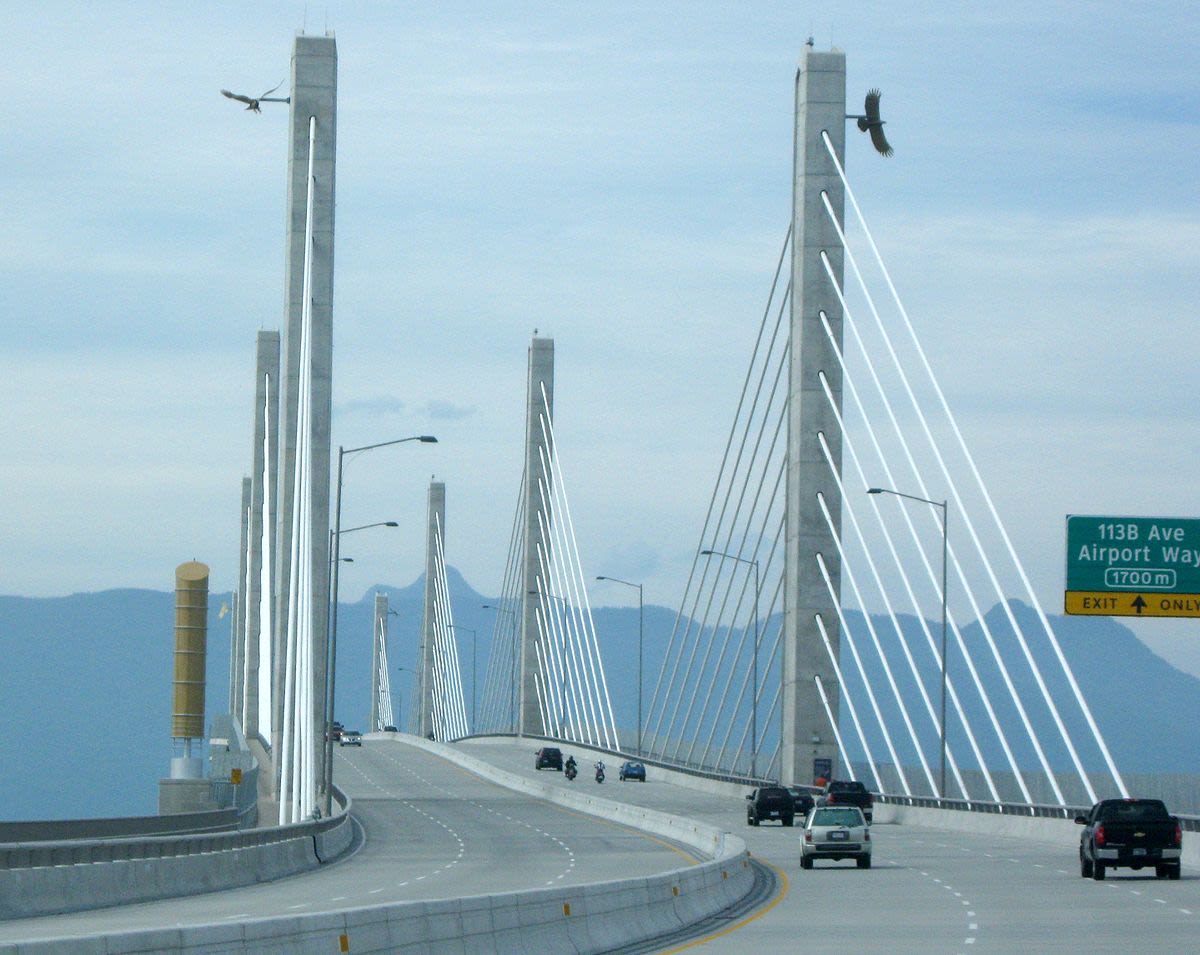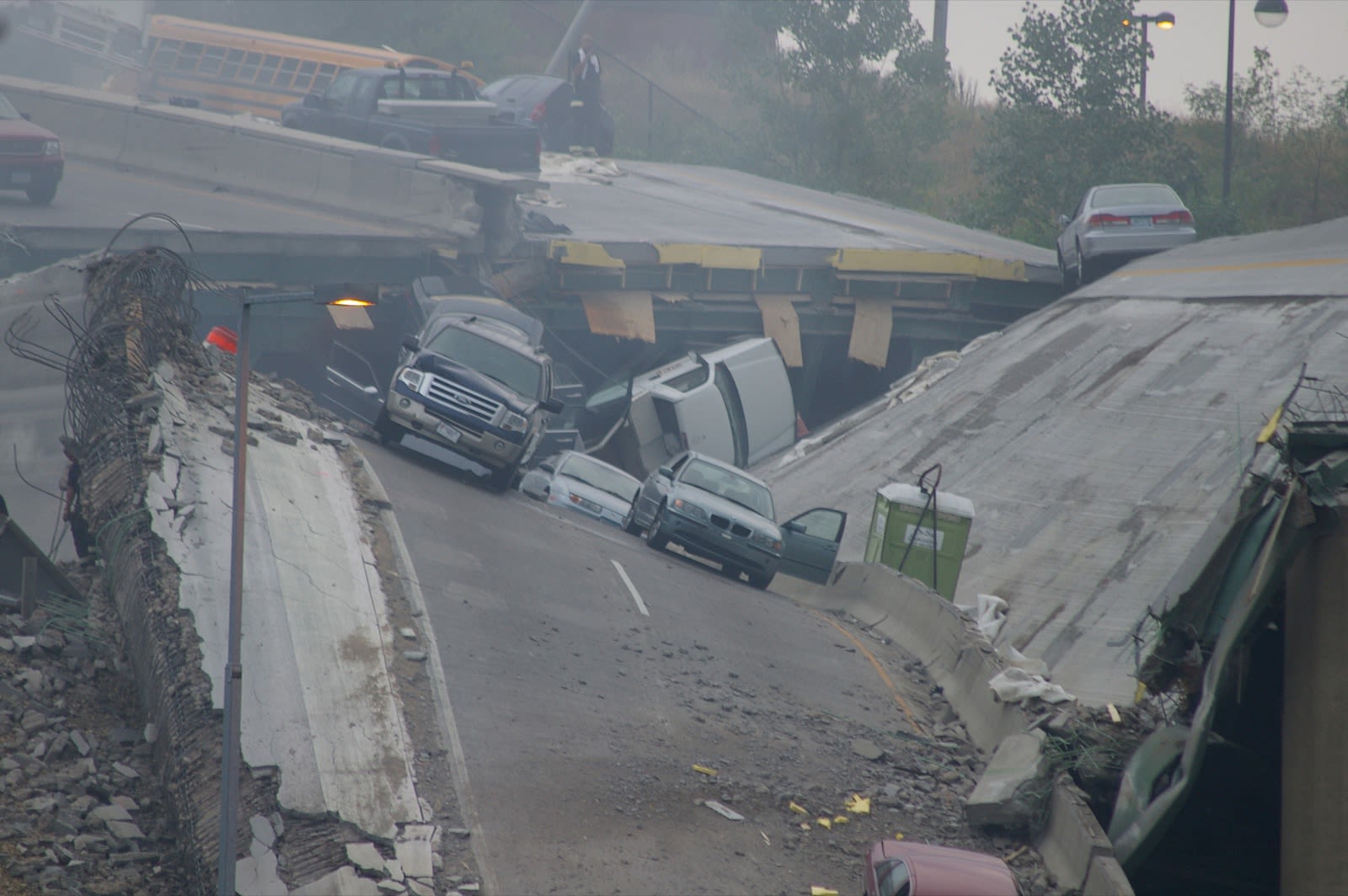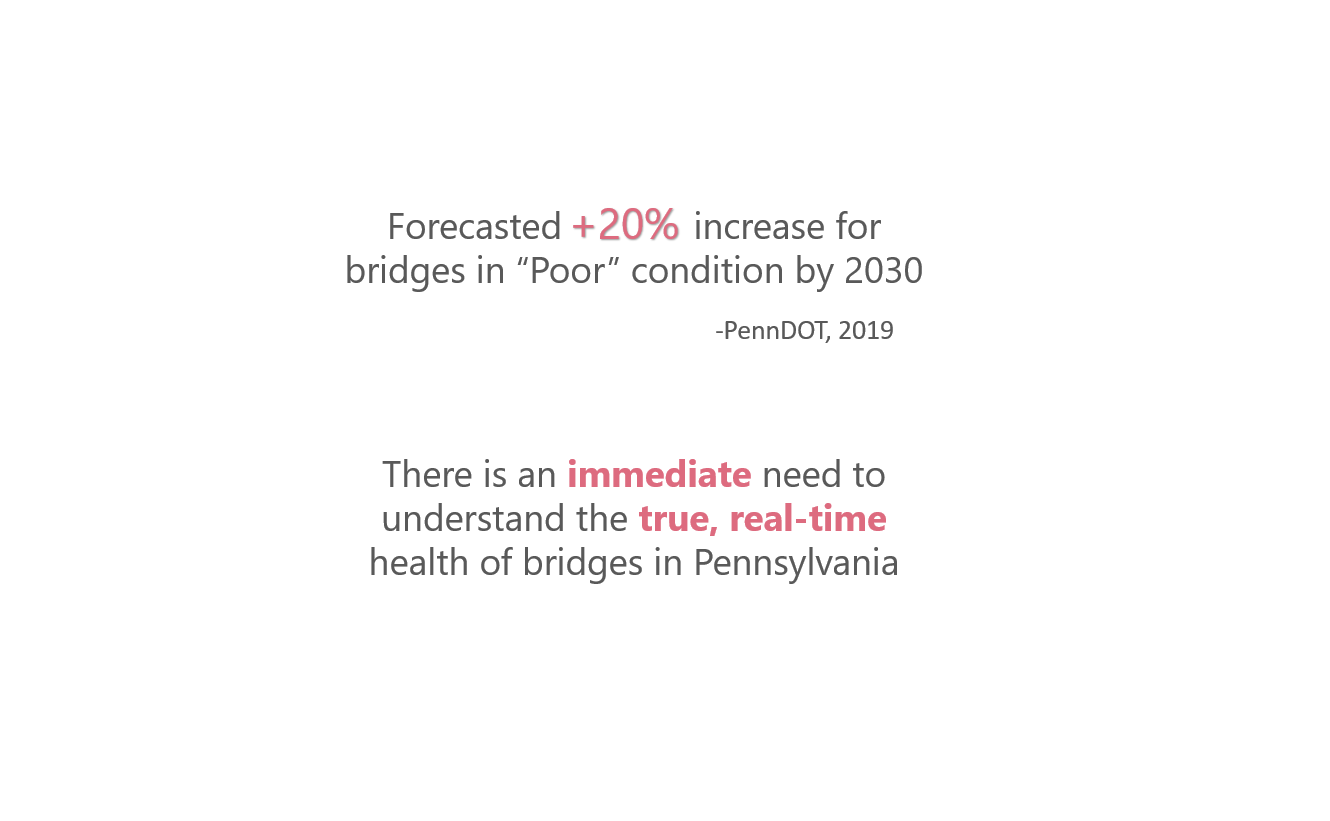Penndot asset management: bridges in 2020

"Completing the right maintenance helps infrastructure last longer and enables us to squeeze the most value from our transportation dollars"
For 2200 years, inventors have developed new methods to build bridges. Not only have they varied the materials bridges were made of, but they also varied how the bridges are supported. These new designs gave people the ability to increase span and strength, while also increasing safety and life expectancy. However, while people were developing these new methods of building bridges, implementing maintenance innovation has lagged behind.
Since the 1900s, Pennsylvania has been investing in its bridge infrastructure
And throughout the 1900s and early 2000s, another trend has started to emerge
What is causing bridges to fail?
46% of failures were caused by deterioration
Bridge Collapse in Minnesota, 13 killed and 145 injured
In 2010, a bridge collapsed in Minneapolis, MN on I-35W. Normal day, although the bridge was overloaded with unusually heavy traffic. Additionally, "the interstate highway bridge had been classified as structurally deficient, meaning that it was aging and in need of repair. In fact, some repair work was going on when it fell. And the bridge was also rated as fracture critical, meaning the failure of just one vital component could cause the whole bridge to collapse" (Schaper, 2017 [9]). The conclusion was devastating, 13 killed and 145 injured.
"The interstate highway bridge had been classified as structurally deficient, meaning that it was aging and in need of repair."

Over 50% of the bridges in Pennsylvania were built between the 1900s to 1960s. These bridges are starting to reflect their age. However, while the number of bridge failures in the US is increasing, PennDOT's bridge infrastructure spending is on the decline!
"A significant portion of Pennsylvania's infrastructure is more than 50 years old and has exceeded its original design life."

How should PennDOT adapt to the situation?
Preventative Maintenance
specifically...two methods
Integrating digital twin technology with cognitive sensors
Digital Twins
(i.e. replicating real objects in virtual form)

Cognitive Sensors
(i.e. sensors reporting live status of bridges)

The steps
- Identify a bridge
- Replicate the bridge in virtual space (dimensions, materials, connections, properties)
- Input real-world defects (cracks, corrosion, impact locations, deformations)
- Use mathematical equations to simulate future scenarios, confirming bridge integrity
Can people really replicate the real world with equations?
Truth is, people have been doing it since "the 1960s and 1970s John [H. Argyris] had applied the finite element method with great success in aerodynamics" ( Hughes, Oden, Papadrakakis, 2004). Although until recently, the method was entirely completed by hand, taking 2 weeks - 1 month to evaluate each component. However, MIT recently developed a way to use cloud computing, reducing the process to minutes.
dig deeper into the details!
Digitial Twins
Commitment to Results
The target is zero bridge failures. Real-time, reliable health data will get you there. You can make an impact! You can understand:
- What is the current status of your bridges?
- What does the future hold for your bridges?
- What can you do now to have zero failures in the future?
Created by: Brent Ripperger
References
[1] Babcock Noell GmbH, BNG, Non Destructive Testing, NDT - Bilfinger Noell GmbH. (2019, July 31). Retrieved October 15, 2020, from https://www.noell.bilfinger.com/en/business-segments/service-and-assembly/non-destructive-testing/
[2] Cognitive Sensor: Listen to Your Plant. (n.d.). Retrieved October 15, 2020, from https://digitalnext.bilfinger.com/resources/use-cases/cognitive-sensor
[3] Commonwealth of Pennsylvania. (2020). Bridges. Retrieved October 15, 2020, from https://www.penndot.gov/ProjectAndPrograms/Bridges/Pages/default.aspx
[4] Hughes, Oden, Papadrakakis, (2004). JOHN H. ARGYRIS 1913-2004. Retrieved October 15, 2020, from https://www.nae.edu/19579/19581/51314/52598/189542/JOHN-H-ARGYRIS-19132004
[5] List of bridge failures. (2020, October 11). Retrieved October 15, 2020, from https://en.wikipedia.org/wiki/List_of_bridge_failures
[6] PennDOT. (2019). PennDOT TAMP. Retrieved 2020, from https://www.penndot.gov/ProjectAndPrograms/Asset-Management/Documents/PennDOT-TAMP.pdf
[7] PennDOT. (2019). PennDOT-AssetManagementPresentation [PDF]. Pennsylvania.
[8] RB-FEA technology: Asset Life Extension Technology. (2019, October 24). Retrieved October 15, 2020, from https://akselos.com/
[9] Schaper, D. (2017, August 01). 10 Years After Bridge Collapse, America Is Still Crumbling. Retrieved October 15, 2020, from https://www.npr.org/2017/08/01/540669701/10-years-after-bridge-collapse-america-is-still-crumbling